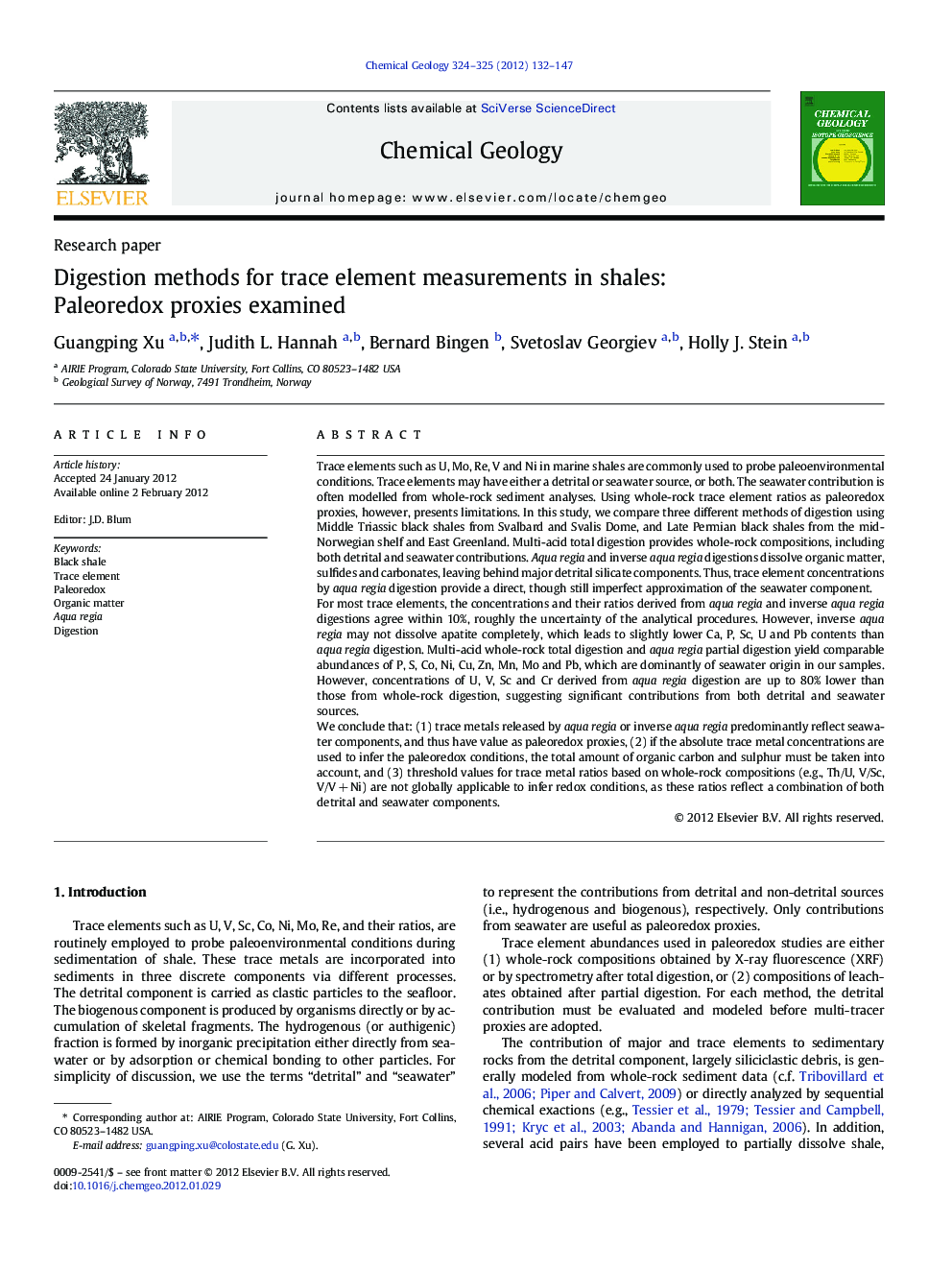| کد مقاله | کد نشریه | سال انتشار | مقاله انگلیسی | نسخه تمام متن |
|---|---|---|---|---|
| 4699361 | 1637639 | 2012 | 16 صفحه PDF | دانلود رایگان |

Trace elements such as U, Mo, Re, V and Ni in marine shales are commonly used to probe paleoenvironmental conditions. Trace elements may have either a detrital or seawater source, or both. The seawater contribution is often modelled from whole-rock sediment analyses. Using whole-rock trace element ratios as paleoredox proxies, however, presents limitations. In this study, we compare three different methods of digestion using Middle Triassic black shales from Svalbard and Svalis Dome, and Late Permian black shales from the mid-Norwegian shelf and East Greenland. Multi-acid total digestion provides whole-rock compositions, including both detrital and seawater contributions. Aqua regia and inverse aqua regia digestions dissolve organic matter, sulfides and carbonates, leaving behind major detrital silicate components. Thus, trace element concentrations by aqua regia digestion provide a direct, though still imperfect approximation of the seawater component.For most trace elements, the concentrations and their ratios derived from aqua regia and inverse aqua regia digestions agree within 10%, roughly the uncertainty of the analytical procedures. However, inverse aqua regia may not dissolve apatite completely, which leads to slightly lower Ca, P, Sc, U and Pb contents than aqua regia digestion. Multi-acid whole-rock total digestion and aqua regia partial digestion yield comparable abundances of P, S, Co, Ni, Cu, Zn, Mn, Mo and Pb, which are dominantly of seawater origin in our samples. However, concentrations of U, V, Sc and Cr derived from aqua regia digestion are up to 80% lower than those from whole-rock digestion, suggesting significant contributions from both detrital and seawater sources.We conclude that: (1) trace metals released by aqua regia or inverse aqua regia predominantly reflect seawater components, and thus have value as paleoredox proxies, (2) if the absolute trace metal concentrations are used to infer the paleoredox conditions, the total amount of organic carbon and sulphur must be taken into account, and (3) threshold values for trace metal ratios based on whole-rock compositions (e.g., Th/U, V/Sc, V/V + Ni) are not globally applicable to infer redox conditions, as these ratios reflect a combination of both detrital and seawater components.
► Aqua regia effectively releases trace metals of seawater origin from black shale.
► Aqua regia may also dissolve or leach trace metals from certain silicates.
► Aqua regia and inverse aqua regia digestions yield similar concentrations.
► U, V, Sc and Cr may derive significant contributions from detrital sources.
► Ratios involving U, V, Sc, Cr from bulk composition may not reflect paleoredox conditions.
Journal: Chemical Geology - Volumes 324–325, 24 September 2012, Pages 132–147